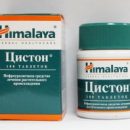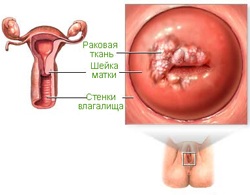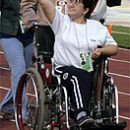Caesarean section - surgical operation at which the child appears through the dissected abdominal wall and the wall of the uterus. Like any other, it is held only on medical testimony. Fear of the future mother in front of natural childbirth is not a reason to have a surgery. Nowadays, almost every fifth child appears with the help of this operation, which gives many women a chance to become happy moms.
Indications for Cesarean section
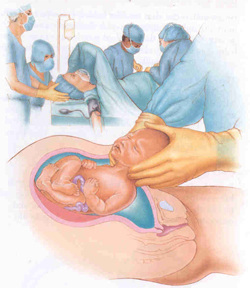
Sometimes before pregnancy or during her doctors report a woman that Cesarean section - the only opportunity to give birth to her. In such cases, the future mother should not be in panic, but to rely on the competent opinion of physicians, because she herself is often not able to adequately appreciate its own state of health and a possible risk for a child.
The list of testimony to the operation, approved by the Ministry of Health of Russia, is quite extensive. They are divided into two groups: absolute (when childbirth is physically not possible, either from the mother side, or by the fetus) and relative (factors that are not related to pregnancy, but can harm mother or child). For example, the first includes:
- very narrow tase of the fempics (III - IV degree);
- Not matching the size of the child's head and mother's pelvis;
- Absolute placenta presence;
- the presence of tumors on the organs of a small pelvis, which makes the passage of the child by generic paths;
- Early discontinuation of placenta with strong bleeding;
- seams and scars in the uterus predisposed to breaks;
- improper position of the fetus (across or macaw);
- The extreme stages of gestosis;
- the threat of rupture of the uterus;
- Serious CNS Diseases, Cardiovascular System, Vision and T.NS.
- To the second:
- anatomically narrow pelvis I and II degree, in combination with other testimony (for example, large fruit);
- phytoplasative insufficiency in chronic form (observed during the entire period of pregnancy);
- Premature extension of water in combination with the pelvic prevention of the fetus;
- Weak protracted generic activity;
- Pup view of the fetus;
- Loading (distilled) pregnancy;
- Toxicosis in late pregnancy.
To save the life of the baby, and sometimes the mother, doctors have to act very promptly - the bill goes for moments. Not one woman is insured against such extreme situations, that is why doctors negatively belong to the birth at home.
Training

Planned operation is carried out in time, the most close to the estimated time of natural labor. Often, pregnant comes to the hospital already with light fights. In case of serious complications, a woman is offered to lie down in a clinic in advance to spend the last weeks under the supervision.
An operation date is assigned. The last meal should be no later than 6 o'clock in the evening. This is necessary if the operation is planned to be carried out under general anesthesia. In any case, you have a conversation with an anesthesiologist, which will give detailed recommendations on the reception of food and water. As before any other operation, the day before the cleansing enema is made. To make a woman well sleeping in front of an important day for her, she gives light soothing drugs.
Before the operation in writing, the future mother must give consent to the Caesarean operation and for anesthesia. Do not forget to warn anesthesiologist if you had allergic reactions to any medications, and let you know what drugs you took the day before.
Anesthesia
In modern clinics, when conducting a planned cesarean section, epidural (peridural) anesthesia, as well as general intravenous or endotracheal anesthesia. The decisive word, which method of anesthesia to choose, remains behind the doctor, depending on the state of the health of women and the kid.
General anesthesia are injected through vein, after which a woman falls asleep. With such a method of pain relief, the woman in labor is unconscious and cannot participate in the event.
Energosal anesthesia also introduces a man completely into deep sleep, but it is given in the form of inhalation through a mask or special respirators. In cases of breathing difficulties in a patient or the emergence of a vomit reflex, such anesthesia is made through endotracheal tubes. This type of anesthesia reduces the dose of injected drugs.
At Epidural anesthesia The medicine is introduced into the epidural spinal space through the catheter. The feminine does not feel pain in the bottom of the body (although it still remains some sensations), however, during the operation in full consciousness. She can't follow the manipulation of doctors (the place where the operation is carried out, fend off the sterile sheet), but she hears the first cry of the baby, has the opportunity immediately after birth to attach it to the chest.
Each type of anesthesia has contraindications. For example, epidural anesthesia cannot be carried out with severe neurological diseases, infections, with blood coagulation disorders. To reveal possible contraindications, for some time the survey should be surveyed, visit therapist, cardiologist, pass tests.
Operation
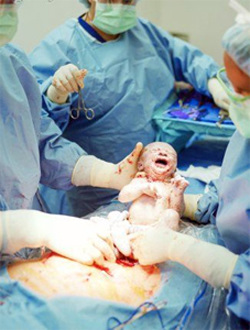
As a rule, the planned operation is prescribed for the time falling after bypass. At around the doctor once again inspection, after it is proposed to prepare for the operation (to wear a special shirt), to the appointed time, the woman will take on a product to the operating room and move to the operating table. And make the last preparations before the operation: cover sheets, measured pressure, insert the catheter into a vein of hands for the introduction of drugs, including anesthesia. The use of the catheter allows you to avoid multiple injections and promptly introduce the necessary medicines in emergency situations.
Next, a woman is given anesthesia, the dose of which is designed so that the impact on the child was minimal. When he starts to act, on top of the scaffolding of the pubis, a cross-section of the skin is made, and then by the team of readiness of neonatologists of the uterus (the dissection along the abdomen from the navel to the pubis is done only in the most extreme cases, for example, when there are already several scars or operation in the uterus. Emergency). Such seam is considered the most physiological and cosmetic. Seam on the uterus is sewn thread, which is absorbed after 3-4 months. Usually, on the sixth eighth day after the operation, the subcutaneous thread is removed (the procedure is absolutely painless, but unpleasant if you are afraid, it is better to turn away and not to watch).
During the operation for the prevention of complications, a woman is given a single dose of a wide range of action, which is completely excreted from the body for 12 hours, so that the kid can be started at the next day.
Day After surgery, a woman is carried out in the ward of intensive therapy, where they are observed for its pressure, pulse, temperature, contraction of the uterus. On the belly contains a container with ice. It gets from the drugs: an anesthetic, injections to reduce the uterus, as well as a dropper with a physiological solution for the restoration of liquid lost during the operation.
Doctors' painkillers offer a few more days, but if the woman feels good, it will be very soon able to refuse them. On the first day after the operation, it is allowed to drink mineral water without gas with the addition of lemon (the latter can only be added if the baby has no allergic reaction).
Recovery
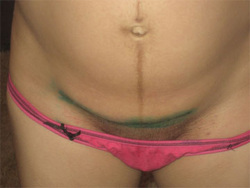
If everything goes fine, on the second day, a woman is transferred to the overall compartment, where she can get up, walk, feed the baby and even care for him, if there are chambers in the hospital «Mother and child».
According to the protocol, the translation into the overall branch is allowed only for 4 days after the operation, but in practice it is often retreating from it. From the personal life of acquaintances I know that on the 5th day they were already discharged home with the kids.
At this time you need as often as possible to apply the child to the breast, so that he gets the first drops of colosure.
Special attention is paid to the restoration of the intestinal work after anesthesia. To «help» It works, in the first days they can make stimulating injections.
On the second and third day after surgery, you can eat low-fat broth, checked meat, cottage cheese, porridge. When the intestines work will improve, it is allowed to go to the familiar diet, taking into account the fact that it is now nursing mom.
The sooner the woman starts to move, the sooner will go on amendment, it is believed that it will also reduce the risk of postoperative adhesions in the abdominal cavity, but the spikes, unfortunately, are inevitable. It is necessary to take care of the postpartum or postoperative bandage, which will facilitate movement (you need to need it as needed). In the absence of complications, consulting with the attending physician, you can begin to perform the simplest physical exercises (avoiding excessive loads).
An extract after such an operation is made on 5-6 days, subject to the normal state of mom and kid. During this time, a woman is observed, for 2-3 days Ultrasound, to make sure that uterus reduced normally and seam from the operation made reliably. Although with a vigilant and attentive inspection of the ultrasound gynecologist may not be required.
The condition of the woman is assessed by the same principles as after ordinary delivery. Basic requirements are a soft breast (the ability to grind over after milk stay), the normalized intestinal work (regular chair), cutting the uterus and normal allocations (Lochi) - they are similar to conventional menstruation: the first 2-4 days after genera are abundant and every day Leaning (a total of a duration of Lohi about 6 weeks).
Here you are at home!

Better, if a woman, at least for two or three months after surgery, will not raise anything harder than his child (do not move the bath with water, do not drag the stroller on the stairs and, of course, forget about «bags with potato»). It is possible to wash at first only in the soul, and with bathing in the bath and the pool will have to wait until the seam will not heal.
As for sexual life, here we will have to pay one and a half or two months. It is believed that since the cesarean section, the child does not pass through the birthday paths, then the woman may not take into account the Council on abstinence from sexual life within two months after delivery. But it's not right. This abstinence is rather required to restore the elasticity of the uterus, and not the muscles of the vagina. Plus at this time there is a risk of getting upward infection.
Special attention should be paid Contraception, Since doctors do not advise you to plan a re-pregnancy for two or three years - this is the time you need the body for full recovery.
In conclusion, I would like to note that medicine does not stand still and under certain circumstances once made by Cesarean section is not an indicator to the same way of the appearance of subsequent children. The birth of the second and subsequent children is quite possible and naturally. The main parameter is the availability of adhesions and the consistency of the postoperative seam by the date of delivery.

